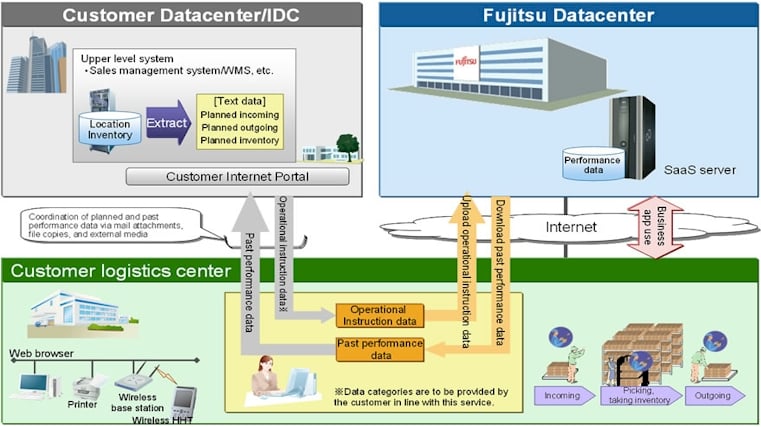This article is more than 1 year old
Fujitsu gets cloudy with home-grown logistics apps
Use our SaaS, dump your code
Japanese conglomerate Fujitsu Group is once again turning some internal applications it has created to run its own business into a cloudy application that companies can pay to use to run their operations.
In Tokyo today, Fujitsu took the wraps off LOMOS/TM-SaaS, a set of logistics programs that helps run inventory operations at the Japanese giant. The software was created by Fujitsu Advanced Engineering, a division of the company that actually develops logistics systems for other companies, and turned its coders loose on Fujitsu's own ops as well.
The LOMOS/TM-SaaS system puts barcodes on inventory, according to the company's announcement, and perhaps you are thinking Fujitsu meant to say RFID tags, but it really does mean barcodes.
The SaaS logistics offering also assumes that companies use wireless handy terminals to do inbound inspections, picking (getting products from stock to ship them), outbound inspections, stocktaking, and inventory transfers. Fujitsu is running the logistics apps in its own data centers and says that this will lower the cost and time of implementing logistics applications for many customers.
Moreover, Fujitsu will integrate the SaaS logistics app with the sales management and warehouse management systems installed at the customer site, integrating past performance data for warehouse and inventory systems with the current operational data to do analytics on the overall logistics operation.
Fujitsu plans to charge ¥75,000 per month for the service, which is a little more than $900 at current exchange rates, and expects to have it deployed to at least 200 customers by March 2016. That seems like a pretty modest cost and a fairly modest ramp, but kudos to Fujitsu (once again) for laying out the plan and the pricing. The IT market would be a better place if all vendors were so honest and forthcoming. That pricing, by the way, does not include installation fees or the cost of the terninals, which are Fujitsu's own MultiPad V2 devices.
The logistics SaaS offering follows the Engineering Cloud that the company announced last June, also based on its own internal code. The Engineering Cloud allows for CAD software, parts databases, and product lifecycle maintenance software to run remotely in Fujitsu data centers using a feature called Remote Virtual Environment Computing, or RVEC.
This is a high-speed image compression technology that allows for high-speed display of applications on virtual desktops that also uses Fujitsu's cloudy back-end systems to render 3D designs and display the results on a normal notebook or desktop instead of a high-end (and expensive) workstation. RVEC was developed by Fujitsu Laboratories and then commercialized by Fujitsu's Advanced Technologies division, which also created the logistics programs outlined above.
If Fujitsu keeps up at this rate, you will be able to use all of its programs on a cloud and, er, compete against Fujitsu. ®

